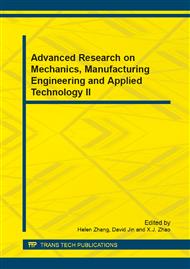p.83
p.88
p.92
p.96
p.106
p.110
p.114
p.118
p.122
A 3D Computation of Fluid-Structure Interaction in a Cyclone Separator
Abstract:
This work presents a 3D computation of fluid-structure interaction in a cyclone separator. The finite volume method was used to simulate the flow field in the cyclone separator. The fluid-structure interaction was conducted by transferring the computational pressure distribution to the corresponding surface of the cyclone shell. The stress and deformation distribution in the cyclone shell was computed by the finite element method. Results obtained show that the maximum equivalent stress and deformation is linearly increases with the increases of the inlet gas velocity.
Info:
Periodical:
Pages:
106-109
Citation:
Online since:
April 2014
Authors:
Price:
Сopyright:
© 2014 Trans Tech Publications Ltd. All Rights Reserved
Share:
Citation:


